Throughout the world, species are going extinct at an unprecedented rate. Many of these species, like the Cape penguin, will likely be gone by 2050. Many birds, like the moa and dodo, have gone extinct directly at the hands of humans. Likewise, many of the extinct birds of North America have disappeared in the past few centuries because of humans.
Here, we’ll learn about ten of the most recently extinct birds in North America. We’ll find out how each one lived and died. Along the way, we’ll learn a little more about what each looked like, what they ate, and what their primary threats were.
Here’s a preview of these 10 extinct birds:
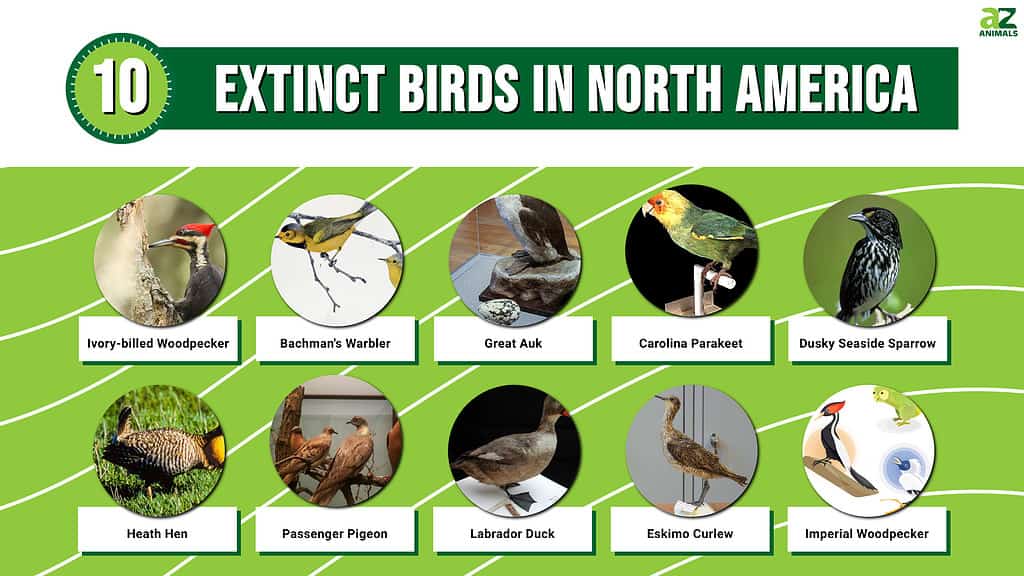
1. Ivory-billed Woodpecker
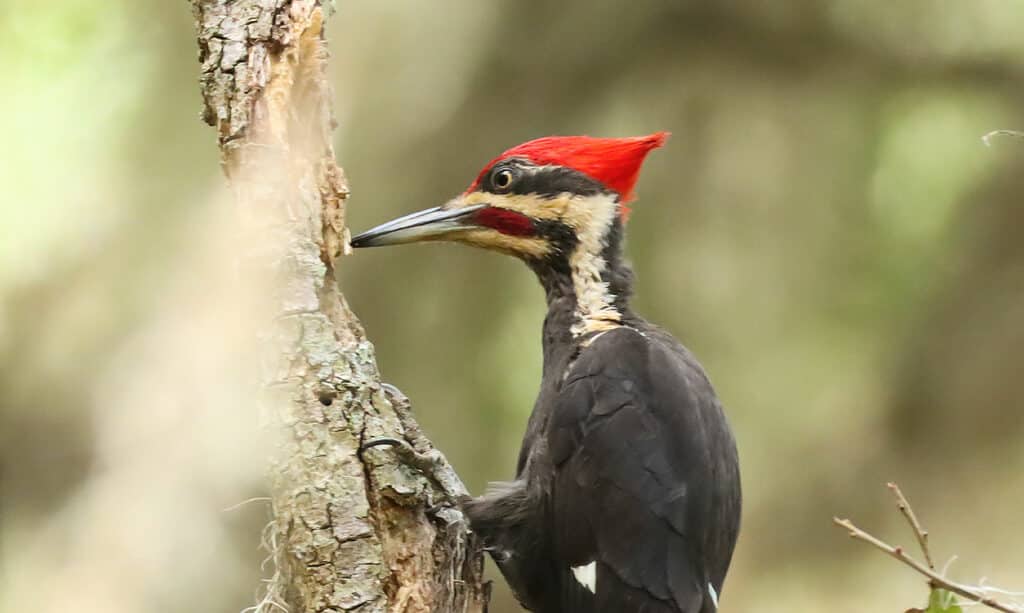
Ivory-billed woodpeckers were sedentary.
©iStock.com/Wirestock
The ivory-billed woodpecker is perhaps the most famous of all extinct birds in North America. The last time these woodpeckers were reliably sighted was in 1944, though reports of their presence in remote parts of the southeastern United States have lingered up until today. Ivory-billed woodpeckers had black and white bodies; males had red, crested plumes at the back of the head. While living, they were the largest species of woodpecker in North America, growing up to 20 inches long, with a 30-inch wingspan.
2. Bachman’s Warbler

Bachman’s warblers may have gone extinct due to habitat destruction.
Last seen in the 1980s, Bachman’s warblers are extinct. These brightly colored extinct birds in North America lived in a wide range that extended from the East Coast into the Midwest. They spent the winter months in Cuba. Bachman’s warblers grew to just over four inches in length. They had yellow, black, and gray feathers that changed with the seasons, with males being brighter colored than females.
3. Great Auk
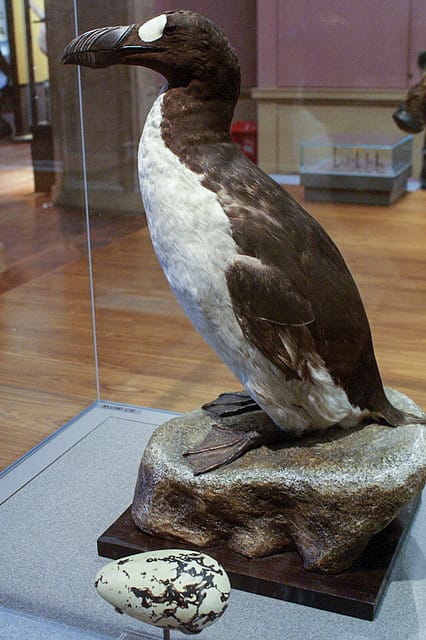
The last two species of great auks were hunted by fishermen.
Like penguins and ostriches, great auks were flightless. These extinct birds in North America greatly resembled the puffins of today. However, they were driven to extinction by 1844. Great auks were sea birds that lived off the East Coast of North America. They grew to 30 inches tall and ate primarily small fish. Unfortunately, these flightless birds made easy prey for hunters, who killed them both to eat, and to use as bait. Great auks had large, grooved beaks ideal for catching fish.
4. Carolina Parakeet
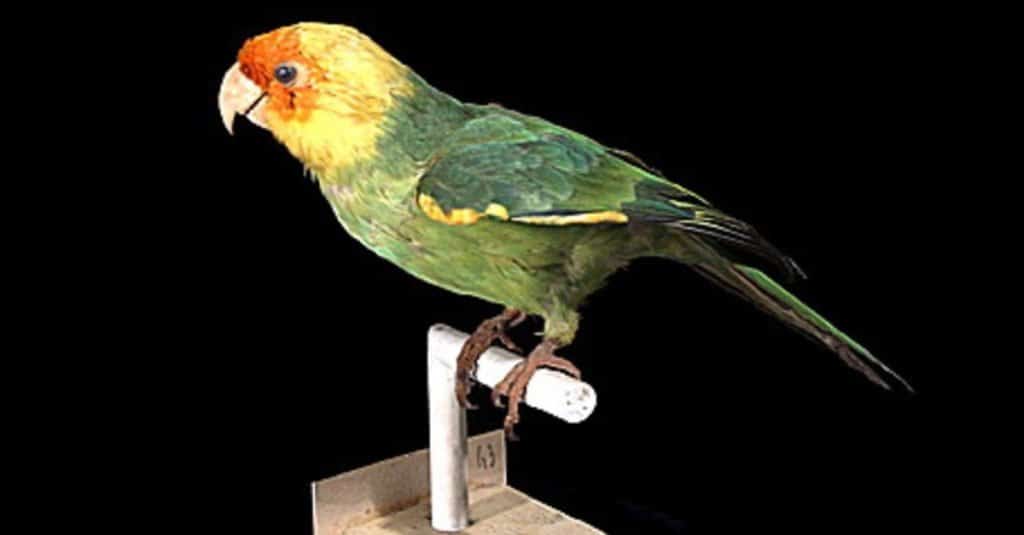
The Carolina
parakeet
went extinct in the 1940s.
©Naturalis Biodiversity Center / CC BY-SA 3.0 – Original / License
The only parrot that ever lived in North America is also one of the extinct birds of North America. Meet the Carolina parakeet. Despite their name, these birds actually lived throughout much of the eastern half of the United States, particularly in the southeastern corner. Carolina parakeets lived in large, social, noisy groups. As European colonialism spread across the eastern United States, so too did the parakeet’s forest habitat disappear. These colorful birds were often shot in large numbers; they were considered nuisances right up until their extinction in the 1940s.
5. Dusky Seaside Sparrow
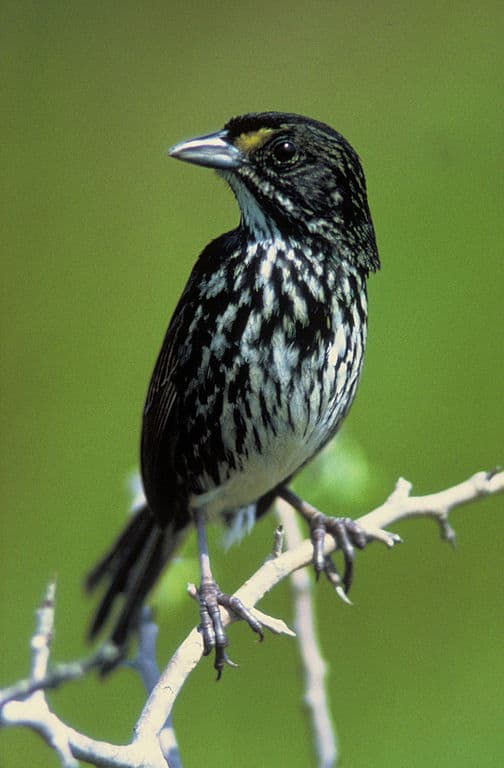
Despite efforts to preserve dusky seaside sparrows, they went extinct in 1987.
These extinct birds in North America lasted until 1987. Dusky seaside sparrows lived only in Florida and the extreme southeastern United States. Unfortunately for these tiny birds, their only nesting grounds rested in the area that would become the Kennedy Space Center, on Merritt Island. Flooding of the island destroyed the nesting grounds. In turn, highway construction and pollution eliminated the last of these sparrows. Captive breeding efforts to preserve the species were unsuccessful.
6. Heath Hen
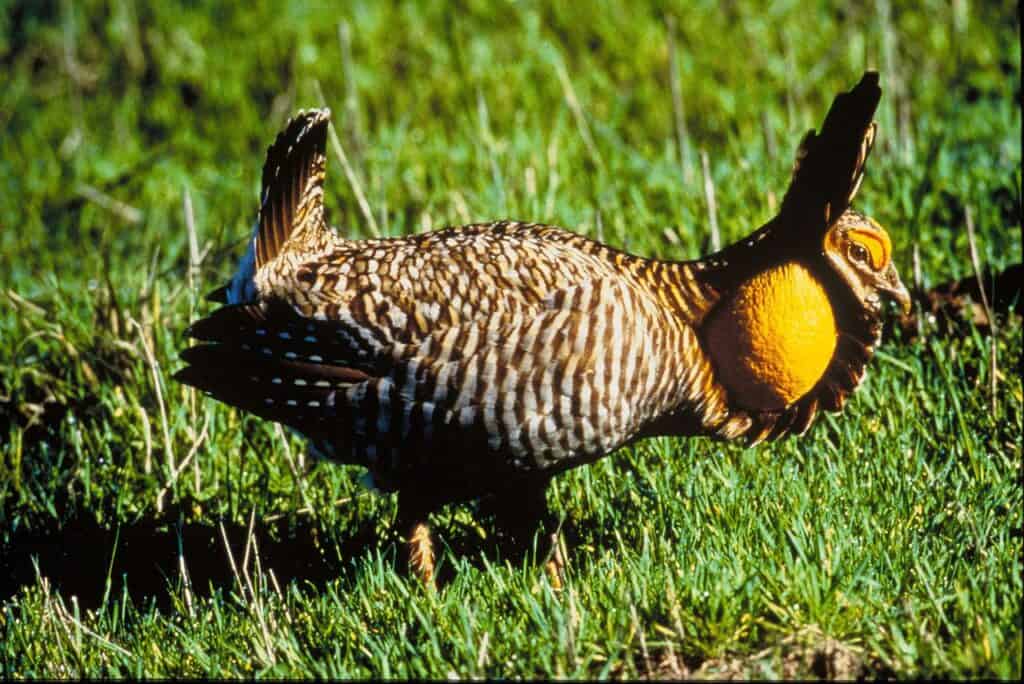
The heath hen was hunted to extinction by 1932.
©Lavendowski, George; USFWS / public domain – Original / License
The heath hen was a type of prairie chicken closely related to turkeys, quails, and chickens. These extinct birds in North America were hunted to extinction by 1932. Once common throughout the coastal plains of the East Coast, these heavy, ground-dwelling birds stood little chance against European colonization. Heath hens grew to about 1.5 feet tall and weighed about two pounds. They had light brown feathers, with unique, inflatable sacs around the throats of the males, as well as erect neck feathers.
7. Passenger Pigeon
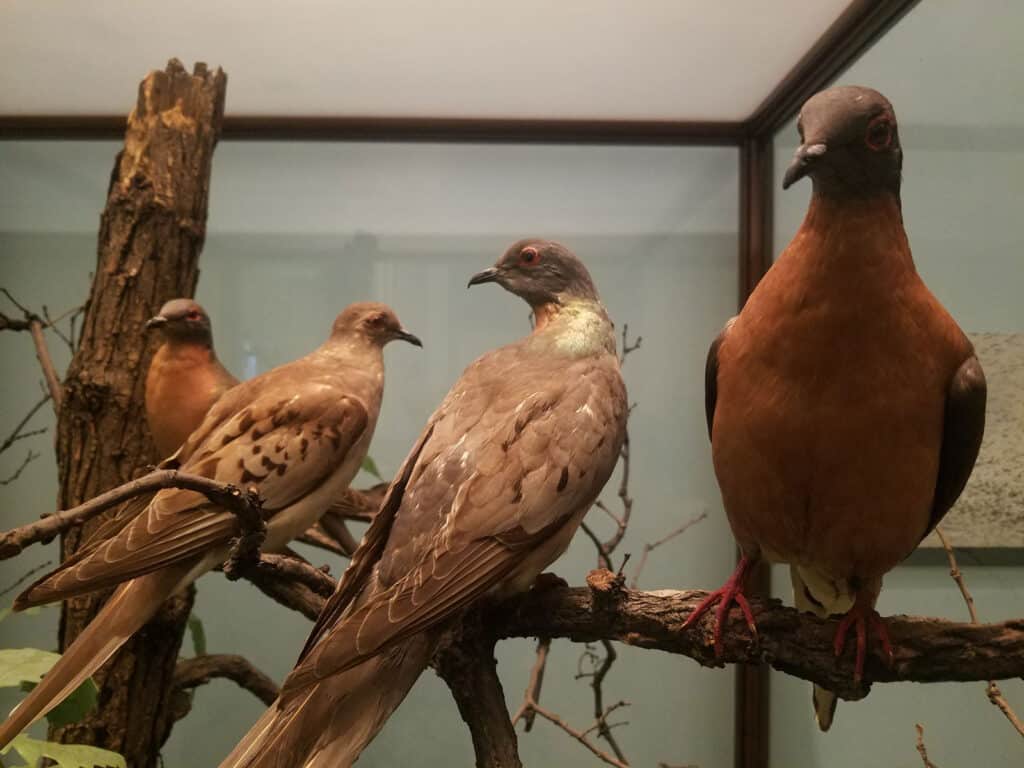
Passenger pigeons went extinct due to overhunting and habitat destruction.
©ChicagoPhotographer/Shutterstock.com
The passenger pigeon is possibly the most commonly used cautionary tale when it comes to extinction. These extinct birds in North America were once some of the most numerous birds around. They looked very similar to doves, and ate insects and fruits. The last wild passenger pigeon died around 1900. Overhunting and habitat destruction were the prime factors in the extinction of these small birds.
8. Labrador Duck
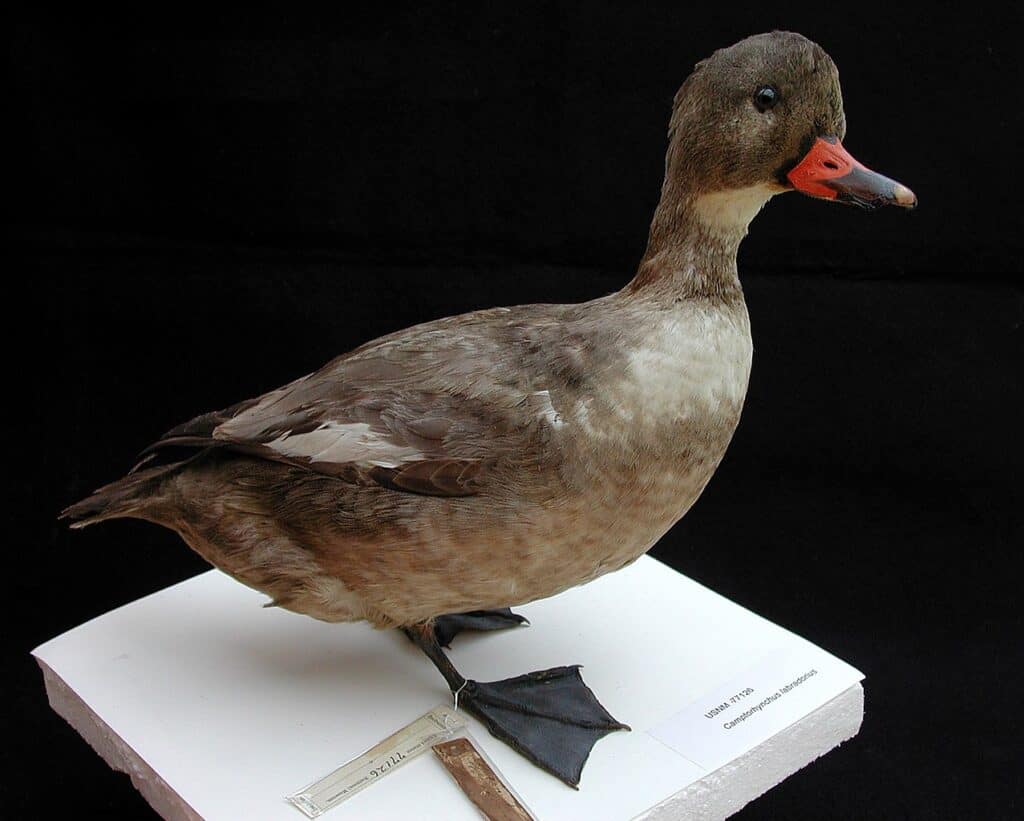
Labrador ducks were hunted to extinction by 1878.
©Smithsonian National Museum of Natural History – Vertebrate Zoology – Birds Division / CC0 1.0 – Original / License
These extinct birds in North America inhabited the East Coast from the northern United States into northern Canada. Labrador ducks were sea birds that were hunted to extinction by 1878. Females had brown bodies with small, red bills and black, webbed feet. Males had black and white plumage with yellow and black bills. They ate mollusks, like mussels, as well as crustaceans and shellfish. In addition to overhunting, Labrador duck eggs were often harvested for food, leading to further population decline. Because Labrador ducks lived in such a limited habitat, it only took a small amount of pressure to cause their decline.
9. Eskimo Curlew
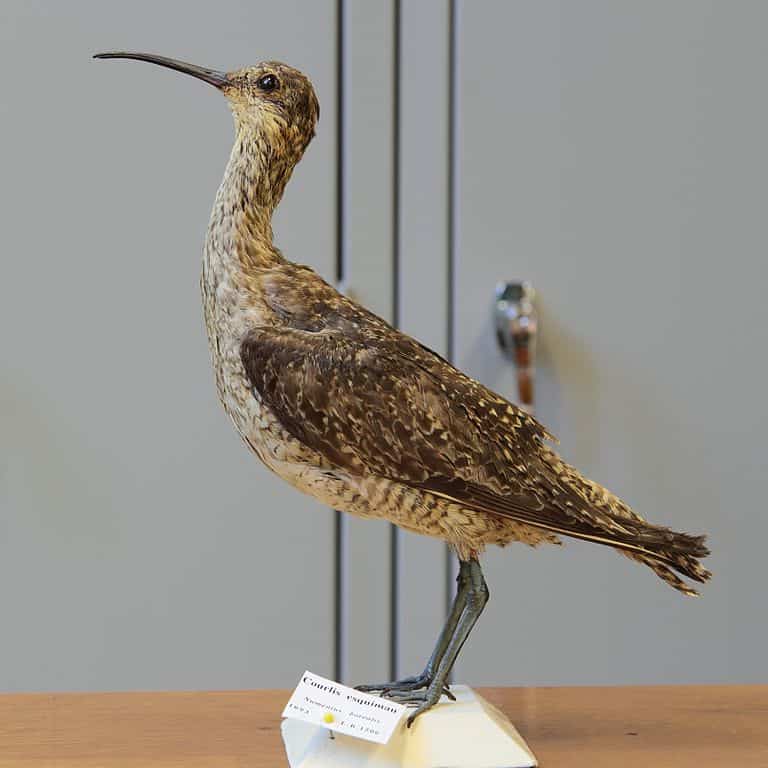
The Eskimo curlew was hunted to extinction.
Currently listed as Critically Endangered (like some types of hammerhead sharks and tigers), the Eskimo curlew is almost certainly gone for good. These birds in North America lived in Alaska and northern Canada, but migrated as far as the southern tip of South America. Eskimo curlews were last seen in the 1980s, though, by then, their numbers had plummeted. Unfortunately, they were likely hunted to extinction. These shore-dwelling birds had long legs and long, curved bills, with flecked brown plumage.
10. Imperial Woodpecker
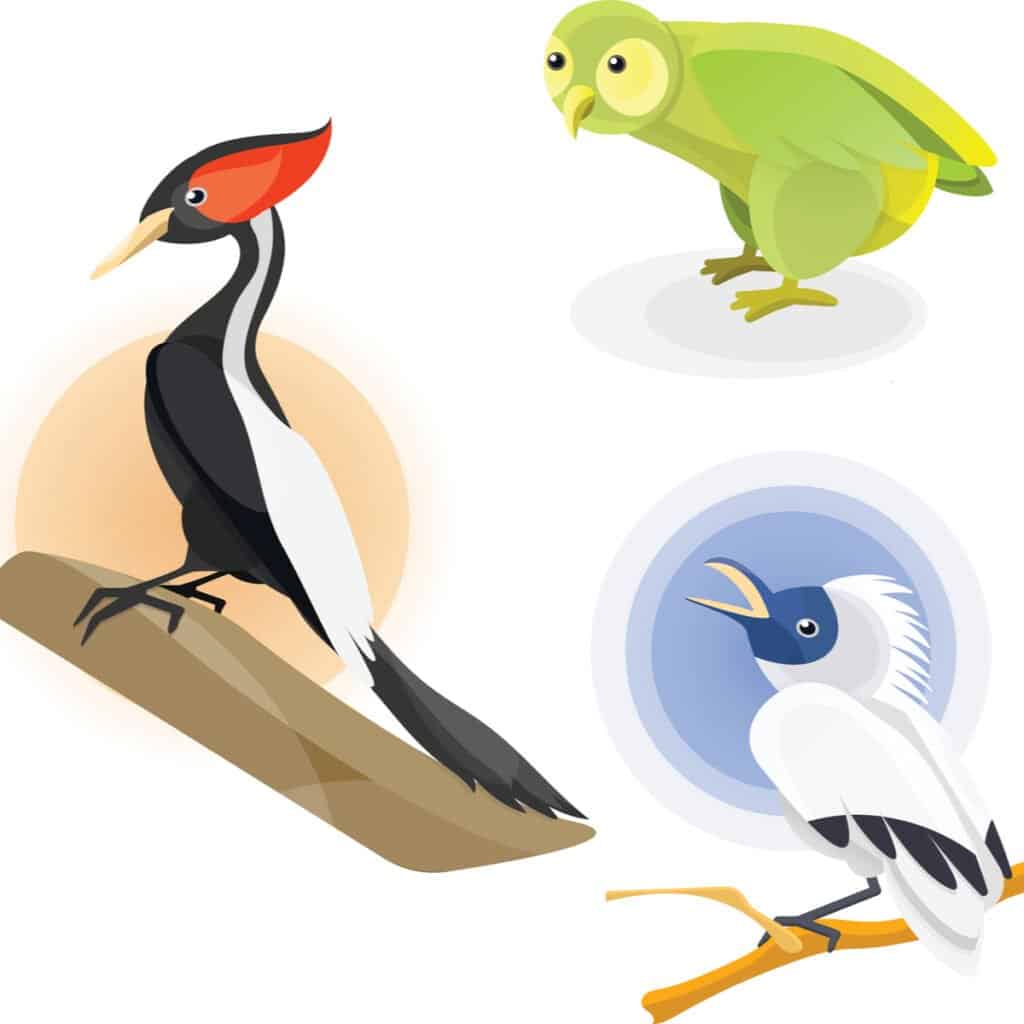
The imperial woodpecker is possibly extinct due to habitat loss.
©Alla Mironova/Shutterstock.com
Once the largest woodpecker in the world (growing up to two feet long) the imperial woodpecker is, by most accounts, extinct. The last reliable sighting of this extinct bird in North America occurred in 1956. Imperial woodpeckers had black and white feathers; males had upright red plumes on their heads. The tale of the imperial woodpecker is one of habitat loss and fragmentation due to heavy logging of their forest homes, overhunting, and even actual campaigns to eliminate this incredible bird. Imperial woodpeckers lived throughout Mexico.
Up Next
What is the Largest Extinct Bird?
Discover 16 Extinct Types of Parrot
The photo featured at the top of this post is © Wirestock Creators/Shutterstock.com
Sources
- Audubon / Accessed September 22, 2022
- Alaska Department of Fish and Game / Accessed September 22, 2022
- Smithsonian / Accessed September 22, 2022
- U.S. Fish & Wildlife Service / Accessed September 22, 2022
- National History Museum / Accessed September 22, 2022
- U.S. Fish & Wildlife Service / Accessed September 22, 2022
Thank you for reading! Have some feedback for us? Contact the AZ Animals editorial team.







